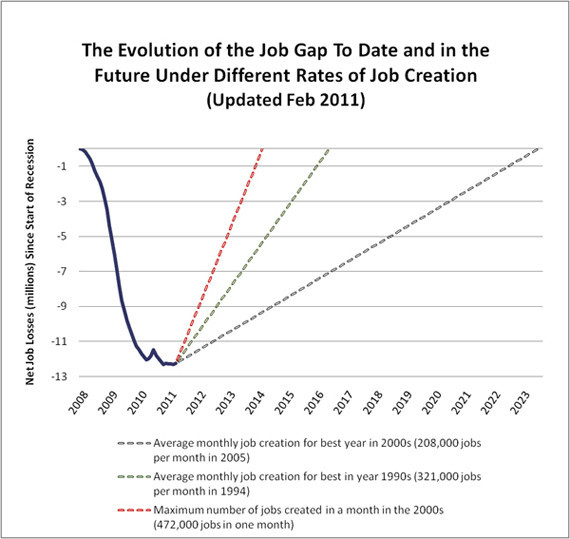
The U.S. economy gained 192,000 jobs in February 2011, while the unemployment rate dropped down to 8.9 percent. That's good news. Just don't expect employment to reach pre-recession levels anytime soon.
Hamilton Project Director Michael Greenstone and Senior Fellow Adam Looney of the Brookings Institute illustrate this grim reality by proposing three hypothetical situations for monthly job creation in the comings years. Imagine, they suggest, if the economy consistently grew at these rates (titles mine):
-- Strong: 208,000 per month: Average monthly job creation during 2005, the best year in 2000s.
-- Amazing: 321,000 per month: Average monthly job creation during 1994, the best year in 1990s.
-- Yeah, right: 472,000 per month: Most jobs created in a single month of the 2000s.
As Greenstone and Looney write:
If the economy adds about 208,000 jobs per month, which was the average monthly rate for the best year of job creation in the 2000s, then it will take until June 2023 -- another 12 years -- to close the job gap. Given a more optimistic rate of 321,000 jobs per month, which was the average monthly rate for the best year of job creation in the 1990s, the economy will reach pre-recession employment levels by May 2016 -- not for another five years.
For reference, the Bureau of Labor Statistics noted today that total "total payroll employment has grown by 1.3 million, or an average of 106,000 per month" in the past year. In other words, expect job reports to be a topic of national debate for the better part of the coming decade.
Here's the graph:

